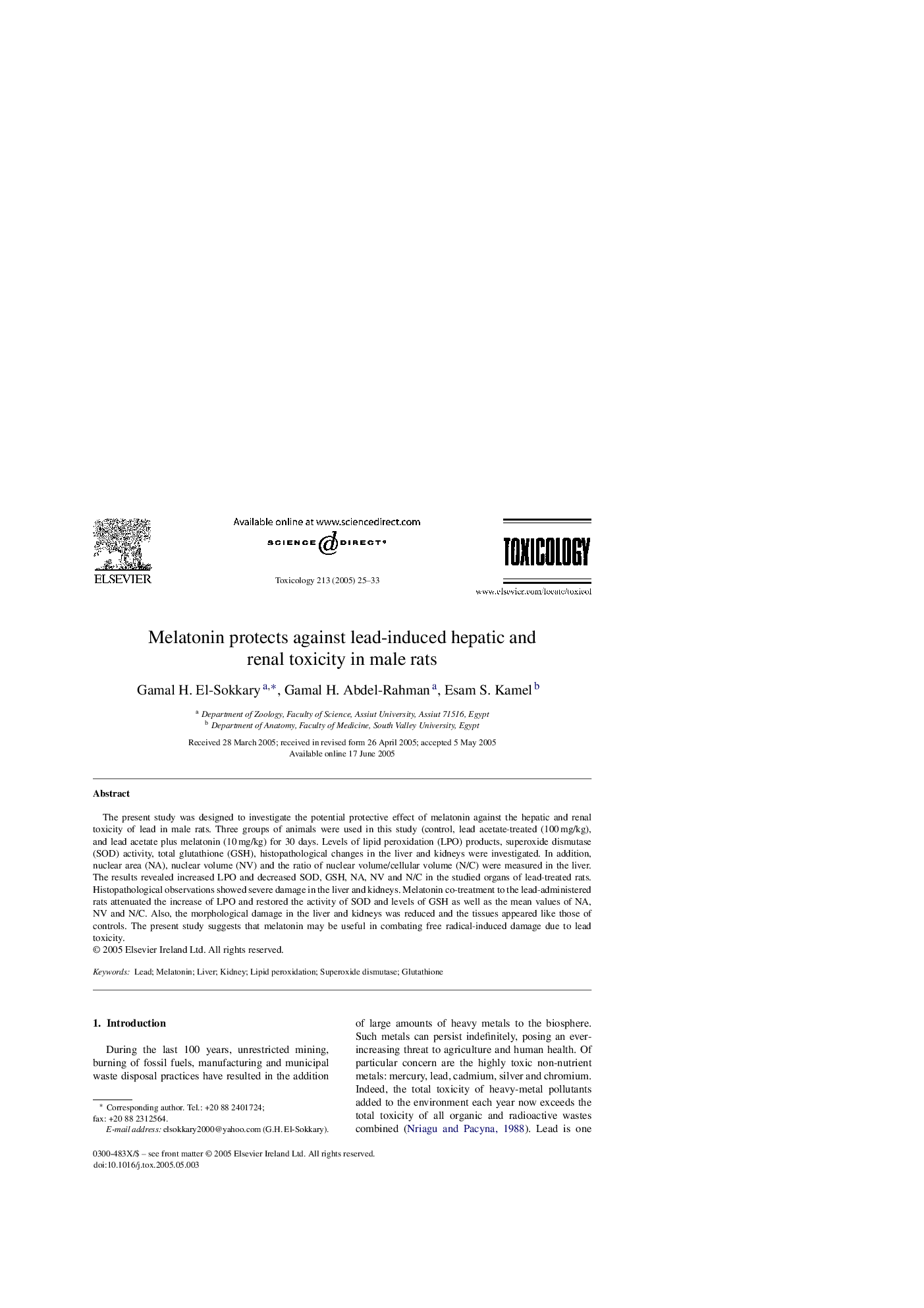| Article ID | Journal | Published Year | Pages | File Type |
|---|---|---|---|---|
| 9034612 | Toxicology | 2005 | 9 Pages |
Abstract
The present study was designed to investigate the potential protective effect of melatonin against the hepatic and renal toxicity of lead in male rats. Three groups of animals were used in this study (control, lead acetate-treated (100Â mg/kg), and lead acetate plus melatonin (10Â mg/kg) for 30 days. Levels of lipid peroxidation (LPO) products, superoxide dismutase (SOD) activity, total glutathione (GSH), histopathological changes in the liver and kidneys were investigated. In addition, nuclear area (NA), nuclear volume (NV) and the ratio of nuclear volume/cellular volume (N/C) were measured in the liver. The results revealed increased LPO and decreased SOD, GSH, NA, NV and N/C in the studied organs of lead-treated rats. Histopathological observations showed severe damage in the liver and kidneys. Melatonin co-treatment to the lead-administered rats attenuated the increase of LPO and restored the activity of SOD and levels of GSH as well as the mean values of NA, NV and N/C. Also, the morphological damage in the liver and kidneys was reduced and the tissues appeared like those of controls. The present study suggests that melatonin may be useful in combating free radical-induced damage due to lead toxicity.
Related Topics
Life Sciences
Environmental Science
Health, Toxicology and Mutagenesis
Authors
Gamal H. El-Sokkary, Gamal H. Abdel-Rahman, Esam S. Kamel,
